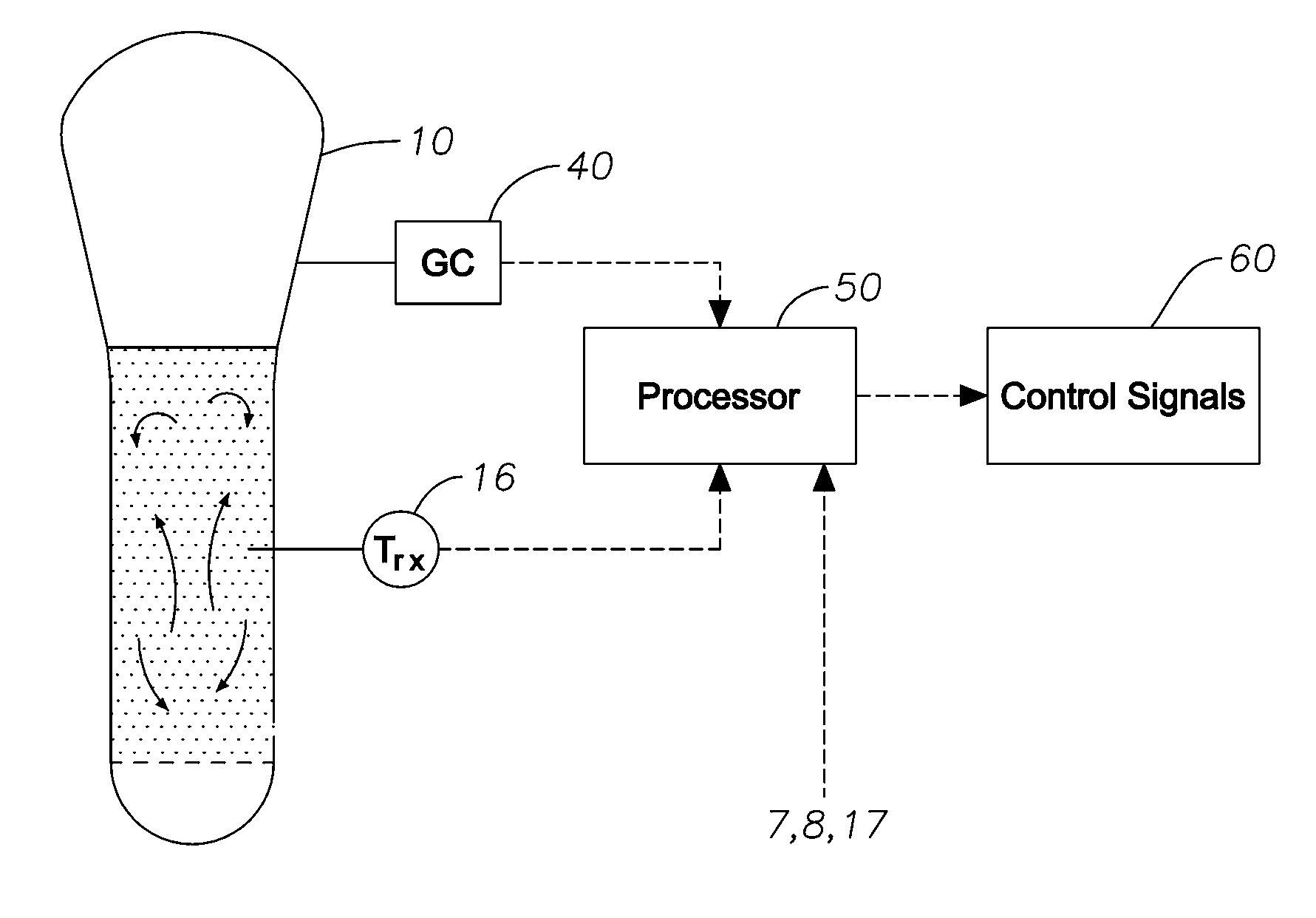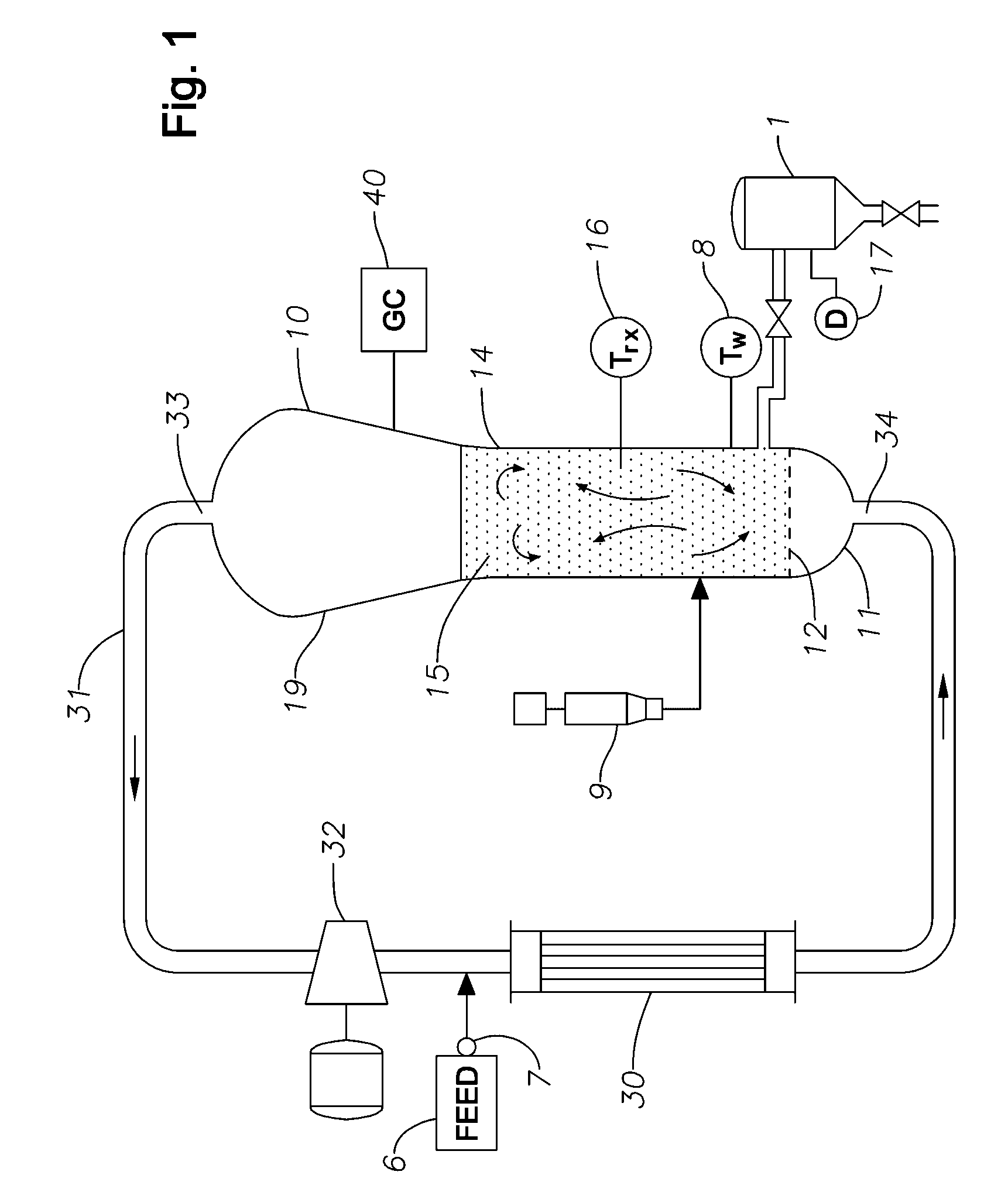Method for reducing and/or preventing production of excessively low density polymer product during polymerization transitions
a technology of polymerization transition and low density, applied in the field of reducing and/or preventing the production of excessively low density polymer products during polymerization transition, can solve the problems of resin agglomeration, reduced fluidization, and forced reactor shutdown, and achieve the reduction or prevention of excessively low density polymer resin production, the effect of preventing or reducing the production of polymer products
- Summary
- Abstract
- Description
- Claims
- Application Information
AI Technical Summary
Benefits of technology
Problems solved by technology
Method used
Image
Examples
Embodiment Construction
[0030]A reactor system whose operation can be controlled (and optionally also monitored) may be described with reference to FIG. 1. The FIG. 1 system includes fluidized bed reactor 10. Reactor 10 has a bottom end 11, a top expanded section 19, a cylindrical (straight) section 14 between bottom end 11, and a distributor plate 12 within section 14. A fluidized bed 15 of granular polymer and catalyst particles is contained within the straight section 14. The bed is fluidized by the steady flow of recycle gas through the distributor plate 12. The flow rate of fluidizing gas is regulated to provide the fluidized bed with relatively good mixing, as illustrated in the figure.
[0031]The reactor system of FIG. 1 has a reactant feed subsystem 6 for performing controlled addition of monomer and each comonomer into the reactor 10. Subsystem 6 allows independent control of the feed rate of the monomer and each comonomer. Feed rate monitoring subsystem 7 monitors the feed rate of monomer into the ...
PUM
| Property | Measurement | Unit |
|---|---|---|
| density | aaaaa | aaaaa |
| partial pressure | aaaaa | aaaaa |
| total pressure | aaaaa | aaaaa |
Abstract
Description
Claims
Application Information
 Login to View More
Login to View More - R&D
- Intellectual Property
- Life Sciences
- Materials
- Tech Scout
- Unparalleled Data Quality
- Higher Quality Content
- 60% Fewer Hallucinations
Browse by: Latest US Patents, China's latest patents, Technical Efficacy Thesaurus, Application Domain, Technology Topic, Popular Technical Reports.
© 2025 PatSnap. All rights reserved.Legal|Privacy policy|Modern Slavery Act Transparency Statement|Sitemap|About US| Contact US: help@patsnap.com



